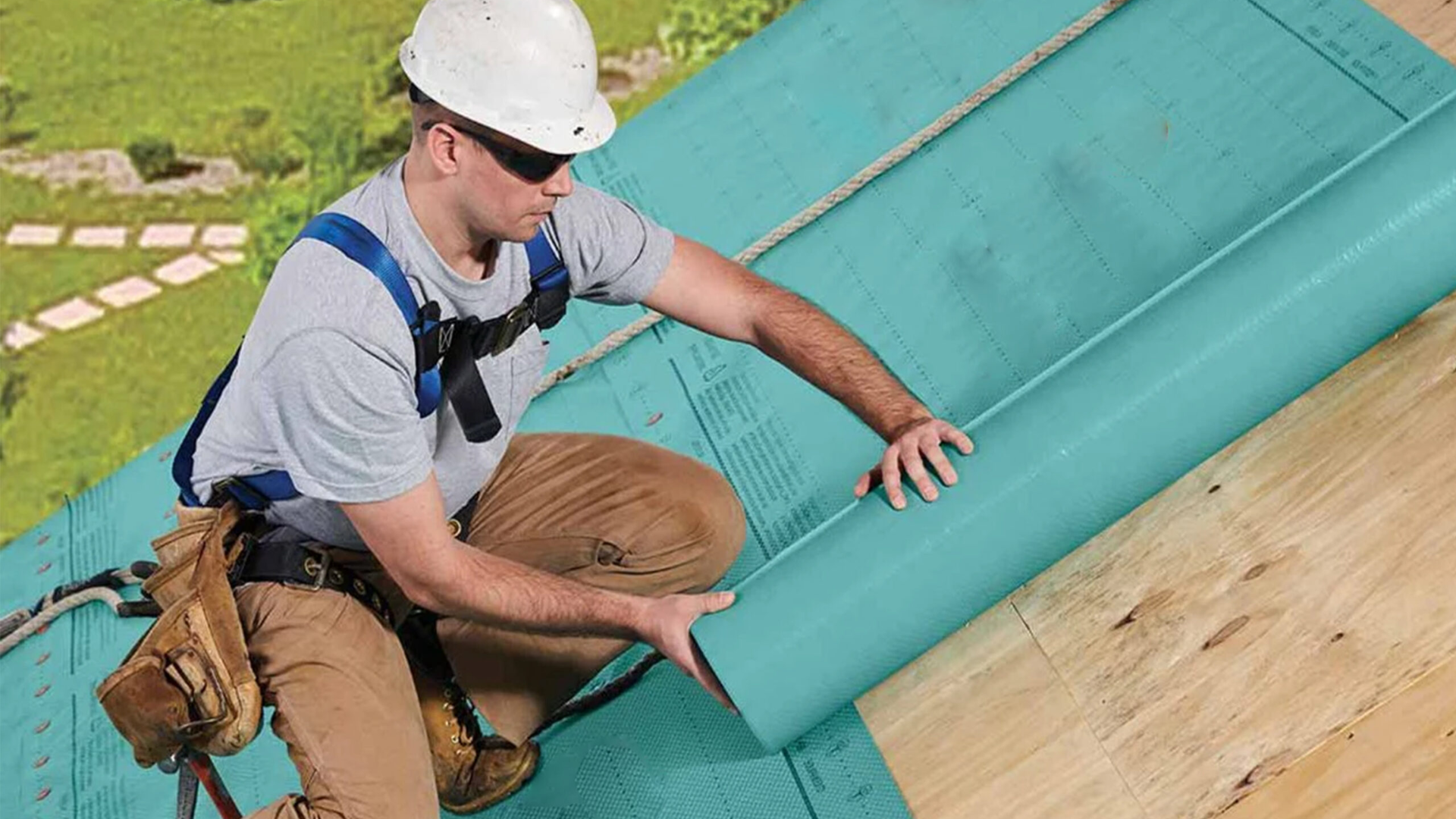When it comes to keeping your roof in great shape, one of the most important things to consider is the underlayment.
It’s the layer that sits right under the shingles, acting as a barrier to protect your home from leaks and water damage.
However, with so many different types available, it can be challenging to determine which one is best for you.
I’m here to help you understand the different roof underlayment types and how to pick the right one based on your needs.
If you’re looking for durability, weather resistance, or just the best value for your money, I’ve got you covered.
By the end, you’ll feel confident in making the right choice for your roof. This will help you make a smart, informed decision that keeps your home safe from the elements for years to come.
What Is Roof Underlayment?
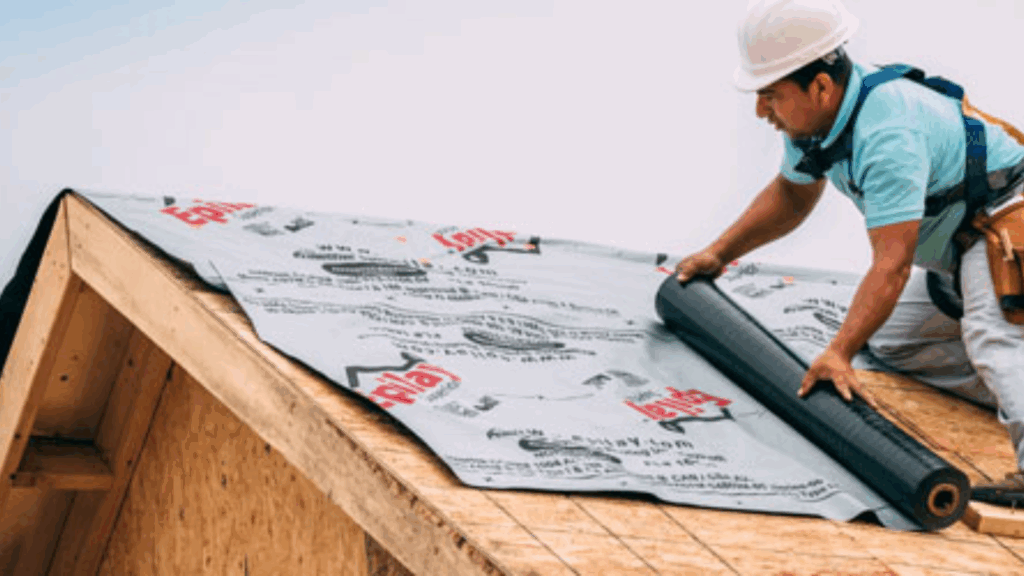
Roof underlayment is a protective layer installed beneath shingles to prevent water from seeping into your home.
Made from materials like felt, rubber, or synthetic products, it shields against rain, snow, and wind, even in areas where shingles may be damaged.
This layer also helps with insulation, keeping your home energy-efficient.
It’s an essential part of your roof’s protection, ensuring the entire system works to keep your home safe.
Types of Roof Underlayment
There are several types of roof underlayment, each offering different benefits and levels of protection. Understanding these options helps you choose the one that fits your roof’s needs and your budget.
1. Asphalt-Saturated Felt (Tar Paper)

Asphalt-saturated felt, often called tar paper, is one of the most traditional types of underlayment.
Made from a fiberglass or paper base soaked in asphalt, it’s known for its ability to resist water.
This material is affordable and relatively easy to install. However, it can be heavier than other options and may not last as long in extreme conditions, like heavy rain or intense sun.
It’s a solid choice for moderate climates and budget-conscious homeowners, but it may require more maintenance over time.
2. Synthetic Underlayment
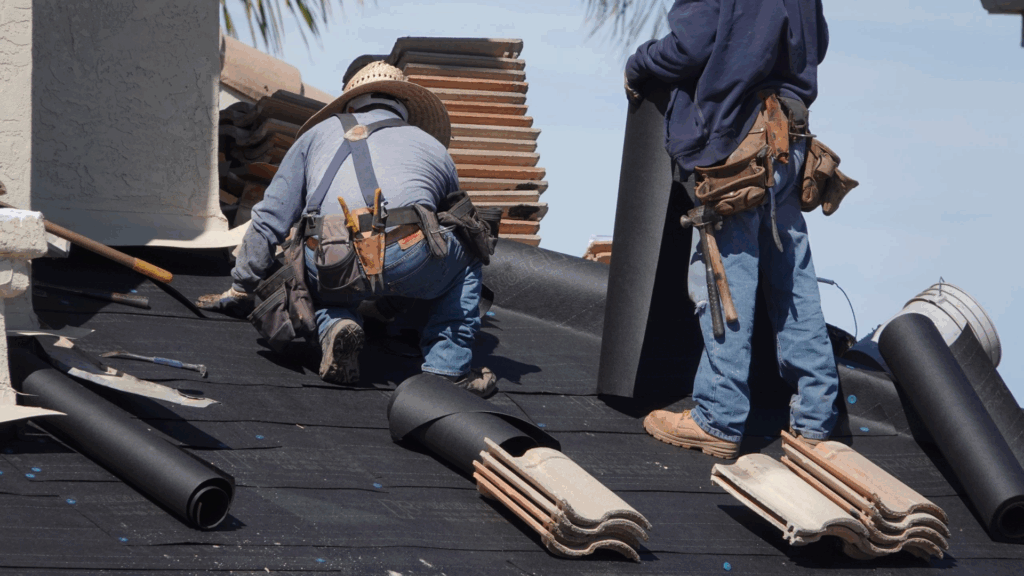
Synthetic underlayment is made from a polymer blend, which makes it lighter, stronger, and more durable than traditional asphalt felt.
It’s also more resistant to UV damage, meaning it can withstand the sun’s harsh rays longer.
Synthetic materials are waterproof and help keep your roof dry during storms.
One of the biggest benefits of synthetic underlayment is its strength-it won’t tear as easily during installation.
The only downside is that it can be more expensive compared to other options, but its performance often makes it worth the extra cost.
3. Rubberized Asphalt Underlayment
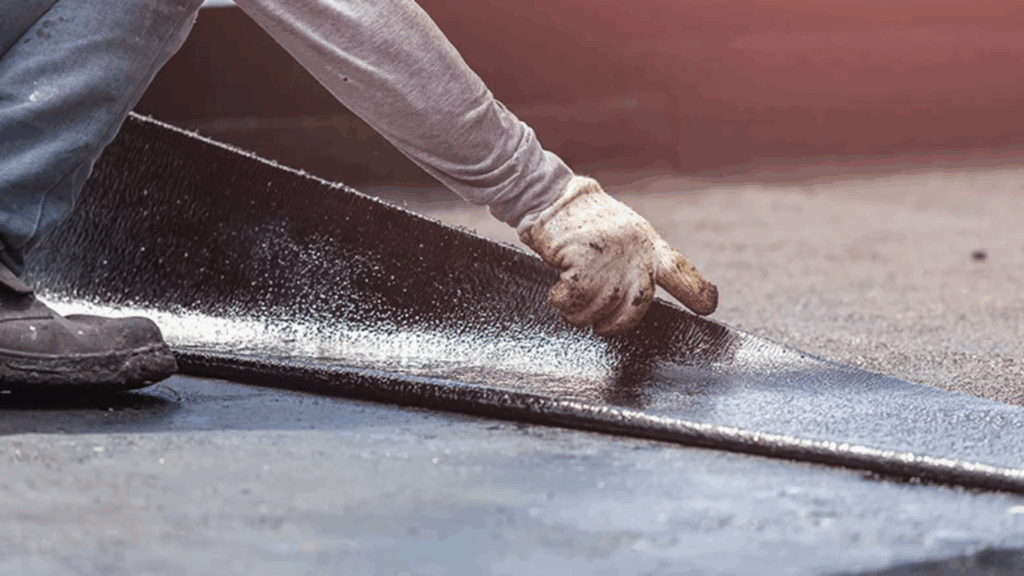
Rubberized asphalt underlayment is a high-performance option that combines asphalt with rubber for added flexibility.
This type of underlayment is especially good for areas where moisture is a major concern, like low-slope roofs or regions prone to ice dams.
Its waterproofing capabilities are excellent, offering extra protection against leaks.
The downside is that it’s typically more expensive than felt or synthetic options.
However, if you’re looking for superior protection, especially in areas with harsh weather, rubberized asphalt is a solid investment.
4. Peel-and-Stick Underlayment

Peel-and-stick underlayment is a self-adhesive product, which makes it incredibly easy to install. You simply peel off the backing and stick it directly to the roof decking.
This underlayment provides excellent waterproofing, as it creates a strong seal, preventing water from getting in.
It’s especially useful in areas prone to heavy rain or ice.
However, the main downside is that cost-peel-and-stick options can be more expensive than traditional underlayment.
Despite this, their ease of installation and strong protective qualities make them a popular choice for homeowners who want extra peace of mind.
Roof Underlayment Types: Comparison
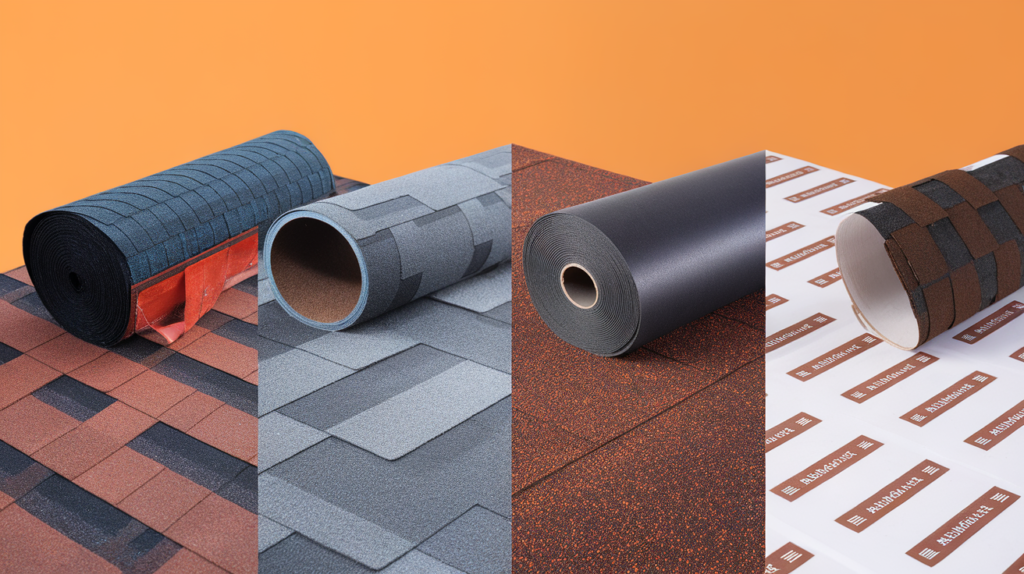
When choosing roof underlayment, compare options based on features, durability, and cost to find the best fit for your roof and climate.
| Underlayment Type | Material | Durability | Water Resistance | Best For | Cost |
|---|---|---|---|---|---|
| Asphalt-Saturated Felt | Asphalt-soaked paper/fiber | Moderate | Good | Budget-friendly, moderate climates | Low |
| Synthetic Underlayment | Polymer blend | High | Excellent | High durability, extreme weather | Medium-High |
| Rubberized Asphalt | Asphalt with rubber | Very High | Superior (Waterproof) | Low-slope roofs, ice-prone areas | High |
| Peel-and-Stick | Self-adhesive polymer | Very High | Excellent | High moisture areas, easy installation | Medium-High |
This comparison should give you a better idea of which underlayment type will provide the best protection for your roof.
How to Choose the Best Roof Underlayment
Choosing the best roof underlayment depends on factors like roof type, climate, and budget. Look at how to make the right decision:
- Roof Type and Slope: Choose an underlayment based on your roof’s design. For steep roofs, asphalt-saturated felt or synthetic works well. For low-slope roofs, opt for rubberized asphalt or peel-and-stick for extra moisture protection.
- Climate Considerations: If you live in an area with heavy rain, snow, or ice, go for rubberized asphalt or peel-and-stick underlayment. In milder climates, asphalt-saturated felt or synthetic may be enough.
- Budget: Asphalt-saturated felt is the most affordable option, while synthetic and peel-and-stick underlayments cost more but offer longer-lasting protection.
- Durability and Protection: For maximum durability and resistance to extreme weather, synthetic or rubberized asphalt underlayment is ideal. These options provide long-term protection from UV damage and water infiltration.
Key Benefits of Roof Underlayment
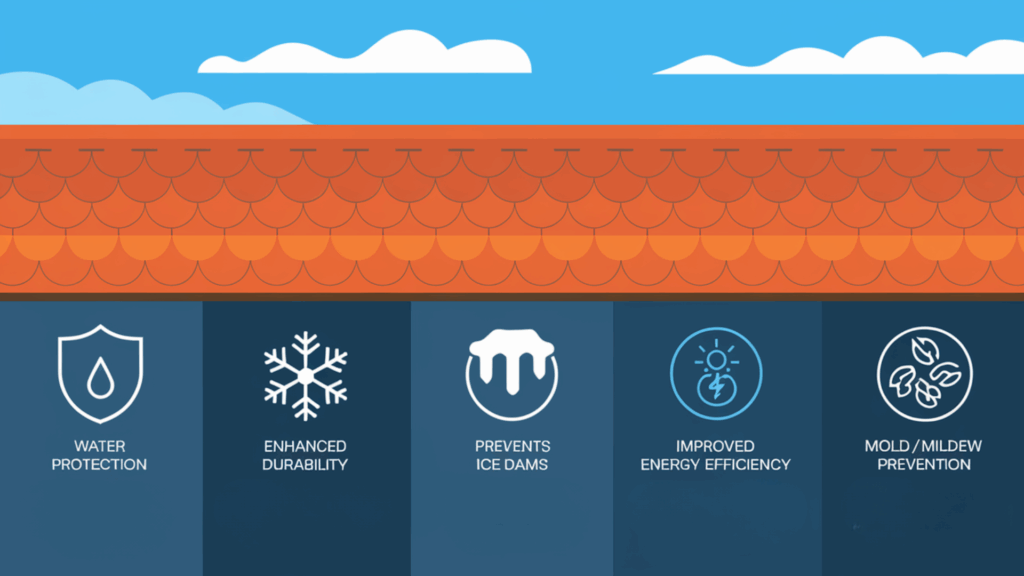
- Water Protection: Roof underlayment acts as an extra layer to prevent water from seeping into your home, reducing the risk of leaks and water damage.
- Enhanced Durability: It extends the lifespan of your roof by protecting it from harsh weather conditions, like heavy rain, snow, and UV rays.
- Prevents Ice Dams: In colder climates, underlayment helps prevent ice dams by allowing water to flow off the roof, which can protect the roof structure and attic.
- Improved Energy Efficiency: Some underlayments provide insulation, helping to regulate temperature inside your home by preventing heat loss or gain.
- Mold and Mildew Prevention: By preventing water infiltration, underlayment helps reduce the risk of mold and mildew buildup in your attic and roof space.
Conclusion
Choosing the right roof underlayment is an important step in protecting your home.
I hope this guide has helped you understand the different types of underlayments and how to choose the best one for your roof.
If you’re looking for something affordable, durable, or built to withstand extreme weather, there’s an option for every need.
Remember, roof underlayment is not just an extra layer-it’s a vital part of your roof’s overall protection system.
When picking the right underlayment, consider your roof type, climate, and budget.
By making the right choice, you’ll ensure that your roof lasts longer and keeps your home safe from the elements.
If you’re ever unsure, don’t hesitate to consult a roofing professional for more tailored advice!

